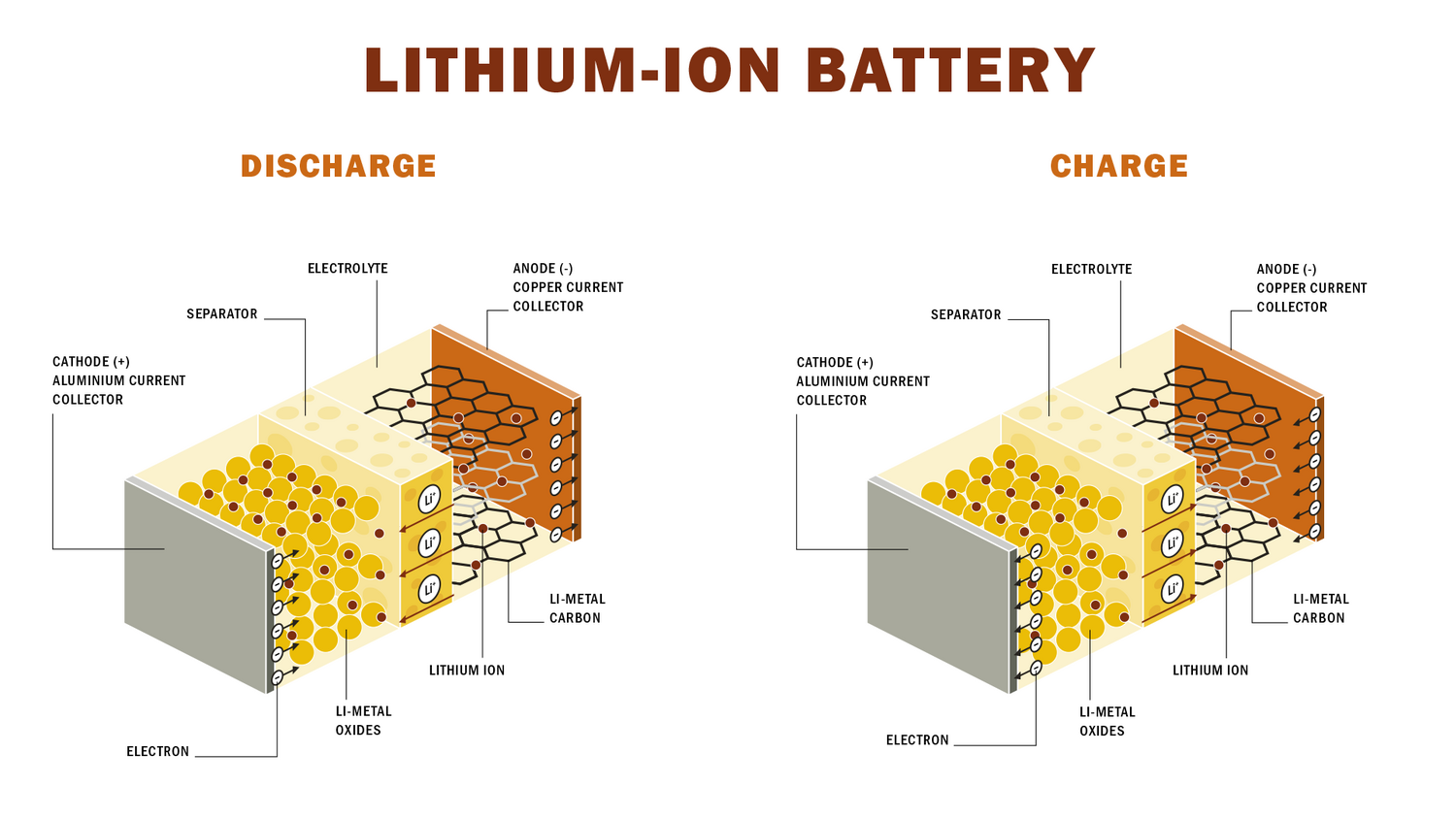Dangerous Goods: Shipping Lithium-ion batteries
A few minutes after a UPS Boeing 747 cargo plane took off from Dubai en route to Cologne/Bonn, the cockpit filled with smoke. The pilots tried to return to Dubai but were unable to keep the airplane under control. They crashed close to Dubai on September 3rd in 2010. Both crew members lost their lives.
Investigations revealed the reason for the disaster was a massive fire in the cargo hold. An area, where many lithium-ion batteries were loaded.
Incidents of lithium-ion batteries catching fire are unfortunately not rare. When they occur onboard a plane or a ship, they can result in a catastrophe. In the case of a lithium battery fire, it is best extinguished with lots of water. To prevent the burning battery from reigniting, it should then be plunged into a water bath.
Lithium-ion batteries are highly flammable. Yet, there is a burning desire amongst smart product manufacturers for these power cells. Because of their low weight, high energy density and durability they provide many charging cycles. They power a growing array of digital products. Besides smartphones, notebooks, and electric bicycles lithium-ion batteries are also found in gardening tools, children’s toys, cardiac pacemakers, and hearing aids.
The growing amount of electric vehicles will intensify the need for lithium-ion batteries. This means their transportation by air, ship, rail, and trucks is rising accordingly.
Legal regulations for transportation of lithium-ion and lithium metal batteries
There are good reasons for declaring lithium-ion batteries “Dangerous Goods”. Every shipment demands detailed adherence to current regulations for each type of transport vehicle. The same applies to lithium metal batteries. In contrast to lithium-ion batteries, they are not rechargeable. Lithium metal batteries are found in watches, cameras, energy meters and security technology.
- Air freight: The IATA Dangerous Goods Regulations apply. For transportation companies, IATA provides comprehensive and fee-based Lithium Battery Shipping Regulations (LBSR). Besides, there are instructions from individual nations and air freight companies. Some even stricter.
- Ocean freight: The International Maritime Organization (IMO) is responsible. They created the IMDG Code (International Maritime Dangerous Goods Code).
This article lists further regulations for road, rail and inland waterway transportation.
The various regulations pose challenges to shippers and carriers. The shipper of the goods is responsible for its correct labelling. Yet, the forwarding company must ensure that the documentation complies with the legal requirements and corresponds to the labelling.

Scope offers security when shipping dangerous goods
In Scope, users record important dangerous goods information within the software. For example, air freight and sea freight shipments. Entering the UN number displays specifications for mandatory documents. No cumbersome export into other systems is necessary, the workflow is not interrupted.
UN numbers for Dangerous Goods
Keep these UN numbers in mind for dangerous goods classifications:
- UN 3480 and UN 3481: The United Nations have assigned the numbers UN 3480 and UN 3481 to lithium-ion batteries. The number depends on the type of transportation and containment. They can be transported separately, contained within equipment or even packed alongside equipment.
- UN 3090 and 3091: Following the same logic, lithium metal batteries have the numbers UN 3090 and 3091.
- UN 3171: For vehicles operated only with lithium-ion batteries or lithium-metal batteries.
- UN 3166: Vehicles operated with, among other things, lithium-ion batteries, or lithium-metal batteries in combination with a fuel cell.
Read more about UN numbers and dangerous goods here: Handling dangerous goods.
Finding the exact designations of lithium-ion batteries and lithium metal batteries
When creating a shipment, within the selection of UN numbers, Scope offers a dropdown menu with the technical designations of lithium-ion batteries and lithium metal batteries. This is important as they both exist in different versions.
They are categorized as follows:
- by power
- lithium content
- according to whether the batteries are damaged, defective or intended for disposal or recycling.
They differ in packing and labelling instructions, as well as the permitted quantity per transport. Selecting a UN number in Scope generates the IMDG-Code.
Lithium-ion batteries and lithium metal batteries are categorized as a class 9 hazard: “Miscellaneous dangerous substances and articles”.
The Cargo-IMP code is also generated by selecting the UN number.
The information that a shipment contains dangerous goods is inserted within the air waybill (AWB) or the bill of lading (B/L).
Upon registration of dangerous goods, users of the Scope air freight module get a request. The system asks them to select if their shipment operates under Cargo Aircraft only (CAO).
Extra documents required for shipping dangerous goods
According to the DGR, air freight shipments need the Shipper's Declaration for Dangerous Goods as an attachment to the air waybill. It includes all relevant information about the loaded dangerous goods. The forwarder must hand it over to the carrier.
Then, the Notification to Captain (NOTOC) is created, based on all freight documents. This attachment to the AWB informs the captain about the dangerous goods hazard classes. He or she also receives information about properties of the freight and how to transport it. The NOTOC includes issues such as ventilation in the cargo hold, required cooling, and which substances not to store next to each other.
For transportation by sea, a Shipper's Declaration is also necessary. According to the IMO Dangerous Goods Declaration, information on weight and packing instructions must be provided. Also, an emergency plan must be in place.
Scope provides assurance of compliance
Lots of safety regulations apply to the transport of lithium-ion batteries and lithium metal batteries. For good reasons. Scope complies with these regulations. Scope users can enter the necessary mandatory information in a single process. They can also be sure that all parties will receive the corresponding documentation, making a secure supply chain possible.